Dominique Chicken
History: Colonial to 1900
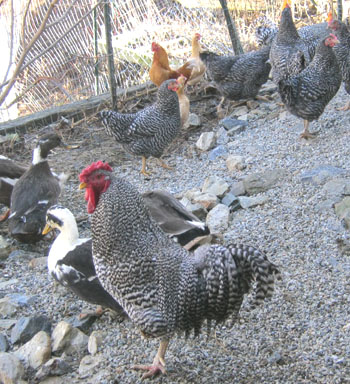
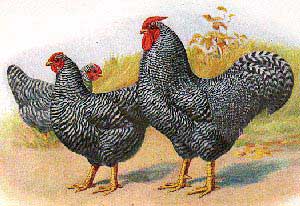 |
America's
First Chicken
A rare, heritage
breed. Historically significant.
The exact origin of the American Dominique chicken is not known, but they
came from European chicken breeds and later in its refinement, some Asian
breeds. They were brought from southern England to New England in Colonial
times.
"This old fashioned breed is said to have been brought over by the early
Puritans, and wherever bred in purity is acknowledged to be one of the best,
hardiest, and most beautiful of all domestic fowls.
"They are without doubt the oldest of the distinctive American breeds, being
mentioned in the earliest poultry books, as an indigenous and valued variety."
-Profits in Poultry, Useful and Ornamental Breeds, 1886.
The top photo is Dominique chickens, Banty chickens, and Ancona ducks.
"Thank you Nancy for your work in preserving this American Heritage chicken."
-David, Sweeny, Texas
|
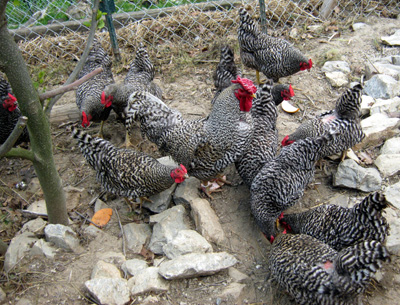 |
Common
on Family Farms
The name "Dominique"
probably came from birds imported from the French colony of Saint-Domingue
(Haiti). Early names of these poultry include Blue Spotted Hen, Old Grey
Hen, Pilgrim Fowl, Dominico, Dominic, Dom, Dominica, Dominecker and Dominicker.
Dominique fowl was very common in American farmyards during the 1820s and
1830s. They were kept as a dual-purpose chicken (egg and meat). During this
time the farmers took minimal care of their birds so only the hardy and
vigorous survived, creating a strong breed of chicken.
|
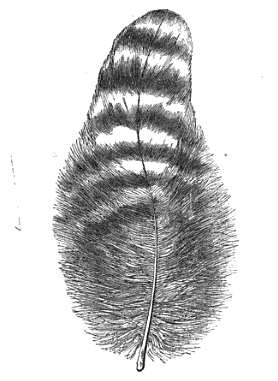
|
Old-Fashioned
Dominique
Starting
in the 1840s breeds from Asia were brought to the United States. People
wanted novel and foreign breeds. They started to displace the American breeds.
It was a slow but steady decline of popularity of the Dominique, America's
first breed of chicken.
"The poultry-keepers of the country (USA) are ever hankering after something
new. But it is not of any use to find a new breed unless it is manifest
improvement, either in size, prolificness, good looks or some other respect,
such as hardiness. The American Dominique is pre-eminently an old breed.
Our great-grandfathers had these fowls." -Poultry World, 1887
This line drawing is a Dominique feather from the American Poulterer's Companion,
1876.
|
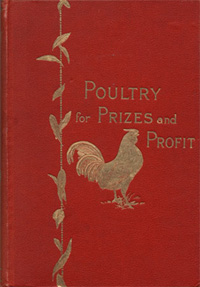
|
First
American Poultry Show
The first
poultry show in the United States was in Boston in 1849. Over 10,000 people
attended to see 1,423 birds. The Dominique breed was shown there.
This book is from 1881. Showing birds has been popular a long time.
"I have always admired the old type of Dominique. In form and carriage it
has always seemed more attractive to me than the Barred Plymouth Rock."
-W.H. Davenport, Farm Poultry, 1908
|
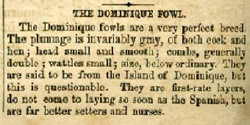
|
American
Dominique Fowl
This is an
advertisement in the "Poultry Breeders Almanac" from 1852. A Pennsylvania
farmer is selling some Dominiques.
|
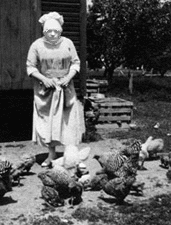
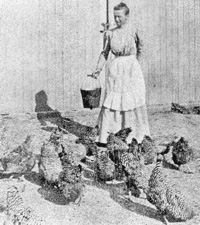
|
Lots
of Praise for Dominiques
In 1860 in
the book, Ornamental and Domestic Poultry: "Dominiques are hardy,
excellent layers."
In 1872 in the London Field: "One of the oldest established, and
certainly one of the most useful, is the Dominique. Each feather is of a
very light gray, barred across with darker slaty-blue bars or pencilling.
The Dominique cocks are showy birds, with full saddles and hackles, and
abundant, well-matched sickle feathers. They should weigh six to eight pounds
when mature. The merits of this bird will recommend them to persons residing
in the country as well worthy of promotion in the poultry-yard."
|
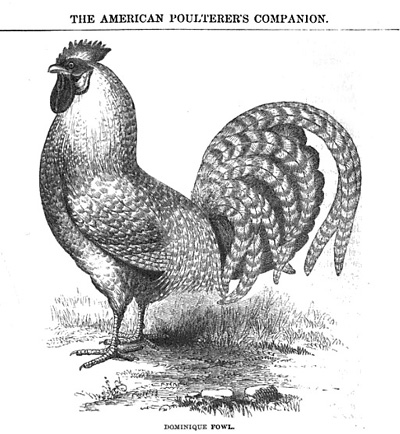
|
Beautiful
Dominiques
From "The
American Poulterer's Companion" about Dominique fowl: "Their beautiful
appearance, when in full plumage, is quite an acquisition to the farm-yard
or lawn. I believe them to be one of the very best breeds of fowl we have,
and I do not know of any breed that alters so little by in-and-in breeding;
they are first rate layers."
This line drawing of Dominique fowl is from "The American Poulterer's Companion:
A Practical Treatise on the Breeding, Rearing, and General Management of
the Various Species of Domestic Poultry" written in 1876.
|
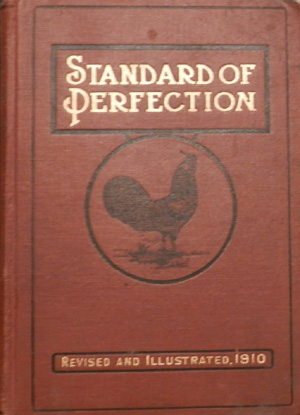
|
Standard
of Perfection
In 1871 the
New York Poultry Society decided that only rose combed Dominiques would
be the breed standard. Before that it was acceptable to have Dominiques
with either rose or single combs.
The single combed Dominiques were folded into the barred Plymouth Rock breed-
a larger breed common in New England created by crossing large, single comb
Dominiques with Java chickens.
In 1874 the Dominique breed was officially admitted to the American Poultry
Association's Standard of Perfection.
|
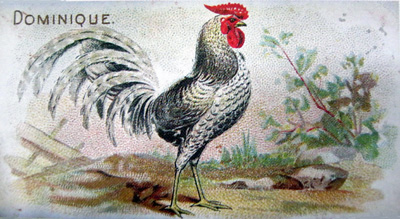 |
Dominiques
in the 1870s
The drawing
to the left is a Dominique cigarette card from 1875. In the 1870s the American
Tobacco Company put various trade cards in cigarettes.
|
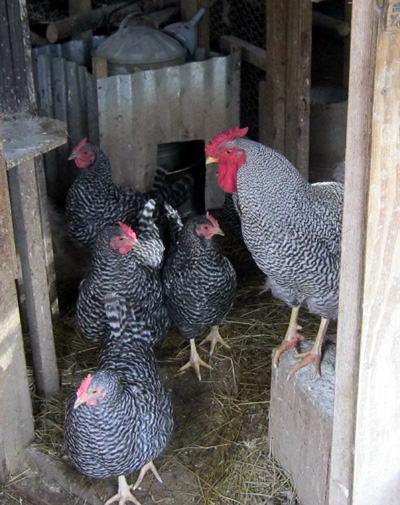 |
Hardy,
Brave Survivors
"The American
Dominiques excel in other varieties of fowls in a happy combination of vivacity
and stamina. They will safely go through an amount of exposure that would
decimate most of the inbred strains of Asiatics."
"They are particularly suited to the wants of the pioneer, being able to
elude the attacks of most ground vermin by an instinctive habit of roosting
in the highest accessible positions."
"The cocks will not infrequently make open fights with hawks, and a well-bred
mature hen with a clutch of chickens will defend them against all comers
in a spirit that savors strongly of game." -The American Stockkeeper,
August 1895.
|
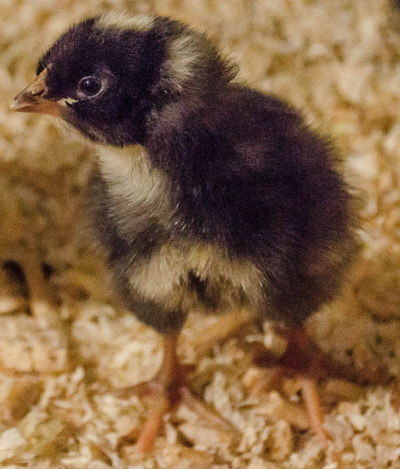
|
Buy
Standard Dominique Hatching Eggs
"All of
the 16 Dominique chicken eggs were fertile. 13 hatched. They look good, like little penguins. Much better than
my last experience with hatching eggs I bought from someone else." -Mike,
Clinton, North Carolina
|
Dominique
Chicken History: 1915 to Present
|









